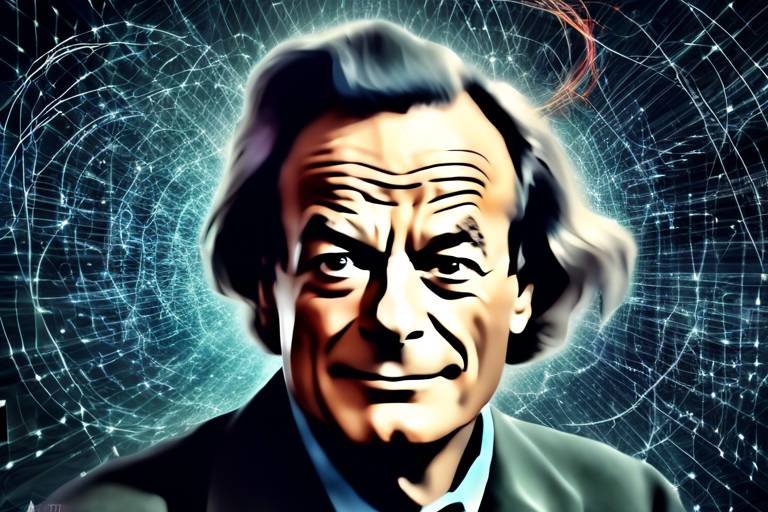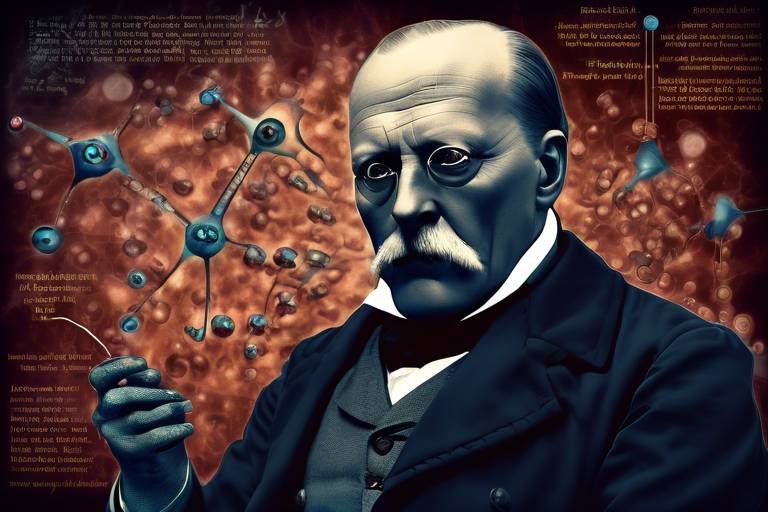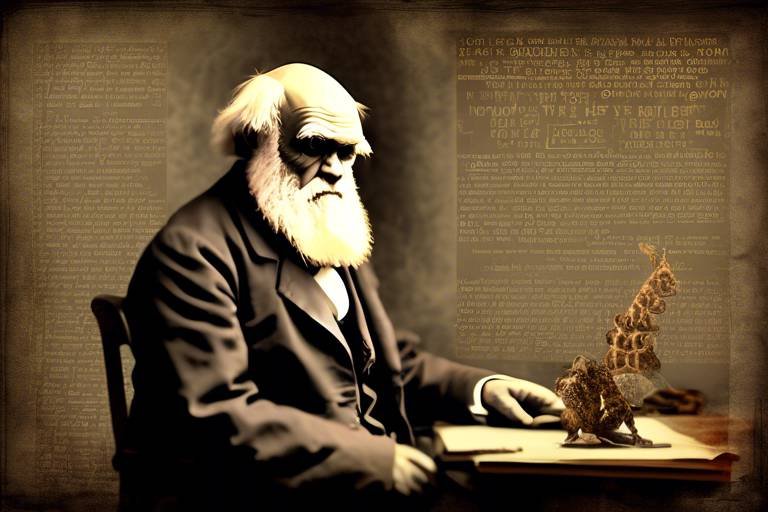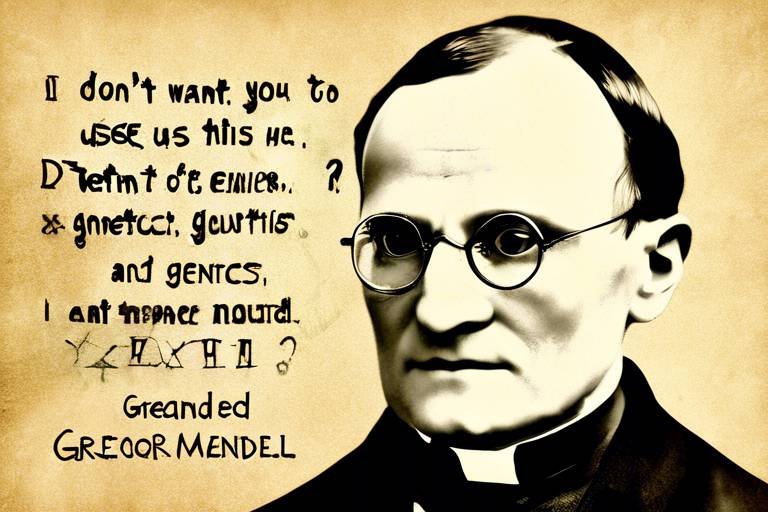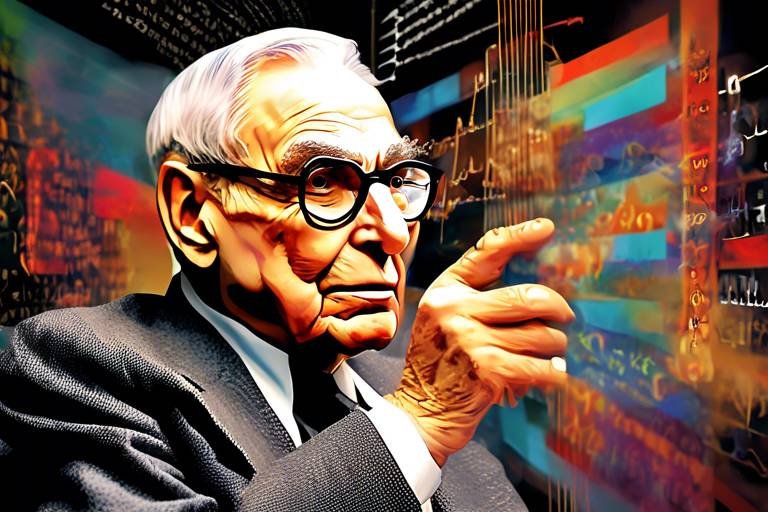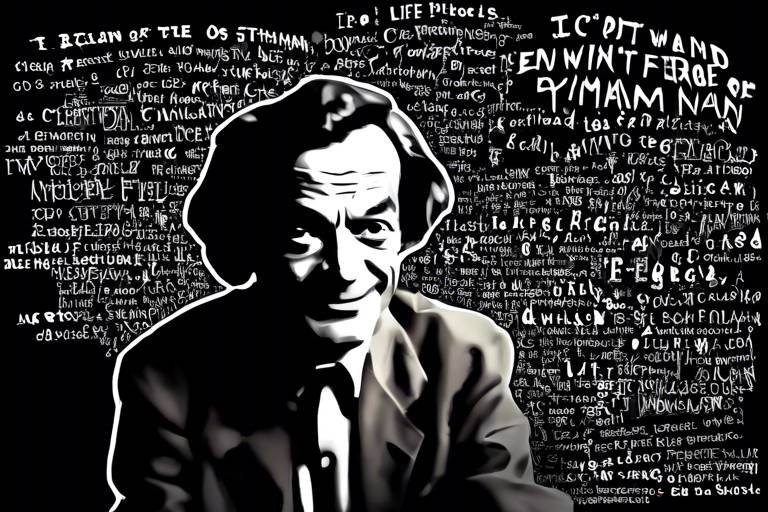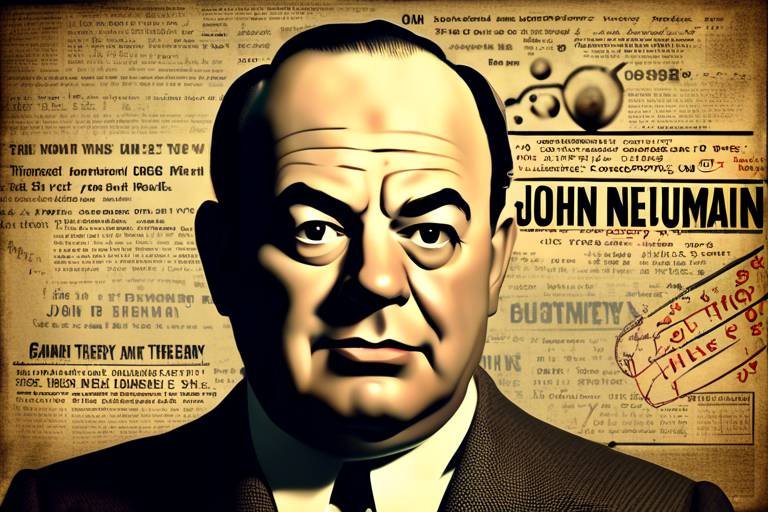The Contributions of Sigmund Freud to Psychology
Sigmund Freud, often referred to as the father of psychoanalysis, has made monumental contributions to the field of psychology that continue to resonate today. His innovative ideas have not only transformed our understanding of the human mind but have also laid the groundwork for various therapeutic practices that are still in use. Freud's theories delve deep into the complexities of human behavior, emotions, and the unconscious mind, offering insights that challenge conventional wisdom. Through his exploration of the psyche, he introduced concepts that have sparked both admiration and critique, making him a pivotal figure in psychological discourse.
Freud's work is characterized by a bold exploration of the unconscious, a realm that many had previously overlooked. He proposed that our thoughts and actions are heavily influenced by desires and memories that lie beneath the surface of our conscious awareness. This idea was revolutionary; it suggested that understanding human behavior requires more than just observing actions—it requires probing into the hidden depths of the mind. Freud's insights paved the way for a deeper understanding of mental health, leading to new methods of treatment and therapy that focus on uncovering these repressed elements.
Moreover, Freud's development of the tripartite model of the psyche—comprising the id, ego, and superego—has provided a comprehensive framework for analyzing personality and internal conflicts. This model illustrates how our primal instincts (the id), our rational decision-making (the ego), and our moral compass (the superego) interact, influencing our behavior and emotional responses throughout life. It’s fascinating to consider how these three components work together, often in conflict, to shape our choices and experiences.
Freud's influence extends beyond individual therapy; his theories have permeated various fields, including literature, art, and cultural studies. His ideas about the unconscious mind and the importance of early childhood experiences have led to a greater understanding of human motivation and behavior in broader contexts. Even today, many contemporary psychologists and therapists draw on Freud's concepts, adapting them to fit modern therapeutic practices and addressing the complexities of human psychology.
As we delve deeper into Freud's contributions, we can appreciate the layers of thought he introduced. His theories have not only sparked debates and discussions but have also inspired countless individuals to explore the intricacies of their own minds. The legacy of Sigmund Freud in psychology is indeed profound, serving as a reminder of the endless quest for understanding the human experience.
- What is Freud's most significant contribution to psychology?
Freud's most significant contribution is arguably his theory of the unconscious, which has transformed our understanding of human behavior and mental processes. - How did Freud's ideas influence modern therapy?
Freud's development of psychoanalysis introduced techniques such as free association and dream analysis, which are still used in various forms of therapy today. - What are the main components of Freud's model of the psyche?
Freud's model consists of three parts: the id, which represents primal instincts; the ego, which balances reality; and the superego, which embodies moral standards. - Are Freud's theories still relevant today?
While some of Freud's ideas have been critiqued, many of his concepts, such as the importance of the unconscious mind, continue to be relevant in modern psychology.
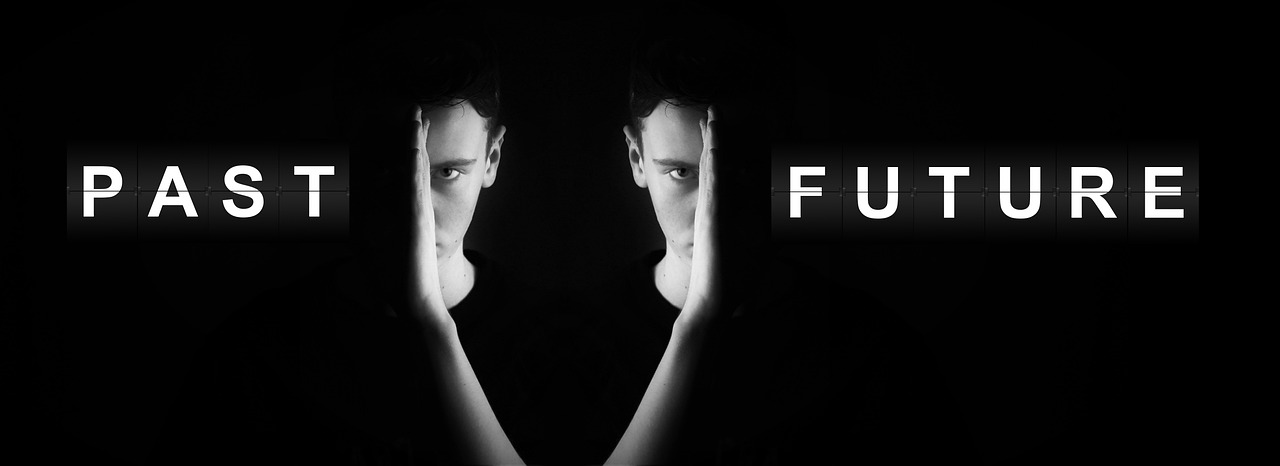
Freud's Theory of the Unconscious
This article explores the significant impact Sigmund Freud had on the field of psychology, examining his theories, concepts, and lasting influence on modern psychological practices.
Sigmund Freud's groundbreaking idea of the unconscious mind fundamentally reshaped our understanding of human behavior. Before Freud, many believed that people were primarily driven by conscious thoughts and rational decision-making. However, Freud introduced the revolutionary notion that a vast portion of our mental activity occurs beneath the surface of our awareness. Imagine your mind as an iceberg; the tip above water represents conscious thoughts, while the massive underwater portion symbolizes the unconscious, filled with repressed memories, desires, and feelings.
Freud argued that these repressed thoughts significantly influence our actions, emotions, and even our relationships. For instance, have you ever found yourself reacting strongly to a situation without understanding why? Freud would suggest that there might be unresolved issues lurking in your unconscious, shaping your behavior in ways you're not even aware of. He believed that by exploring this hidden realm, individuals could gain insight into their motivations and conflicts, ultimately leading to personal growth and healing.
Freud's exploration of the unconscious mind revealed that it is not just a void but a rich landscape filled with symbolism and hidden meanings. He posited that dreams serve as a direct pathway to the unconscious, where suppressed thoughts can manifest in symbolic forms. This idea opened new avenues for understanding human psychology and laid the groundwork for many therapeutic techniques that are still in use today.
To illustrate Freud's concept of the unconscious, consider the following table that summarizes its key features:
| Feature | Description |
|---|---|
| Repression | The process of burying distressing thoughts and memories out of conscious awareness. |
| Dreams | Considered the "royal road" to the unconscious, revealing hidden desires and fears. |
| Symbolism | Unconscious thoughts often manifest in symbolic forms, requiring interpretation. |
| Free Association | A therapeutic technique to access unconscious thoughts by speaking freely without censorship. |
Freud's insights into the unconscious have profound implications for understanding mental health. By acknowledging that many of our thoughts and behaviors are influenced by hidden factors, we can approach therapy with a more comprehensive perspective. This understanding encourages individuals to explore their inner worlds, fostering a deeper connection with themselves and their experiences.
In summary, Freud's theory of the unconscious not only revolutionized psychology but also provided a framework for understanding the complexities of human behavior. It invites us to delve deeper into our minds, uncovering the intricate interplay between our conscious and unconscious processes. As we navigate our lives, recognizing the influence of the unconscious can lead to greater self-awareness and emotional well-being.
- What is the unconscious mind according to Freud? The unconscious mind is a part of our mental activity that is not accessible to our conscious awareness, containing repressed thoughts, desires, and memories.
- How do dreams relate to the unconscious? Freud believed that dreams are a window into the unconscious, revealing hidden desires and fears through symbolism.
- What is repression? Repression is the process of pushing distressing thoughts and memories out of conscious awareness to protect the individual from emotional pain.
- How can understanding the unconscious help in therapy? By exploring unconscious thoughts and feelings, individuals can gain insight into their behaviors and emotions, facilitating personal growth and healing.

The Structure of Personality
Sigmund Freud's revolutionary ideas about the structure of personality have left an indelible mark on psychology. He proposed a fascinating tripartite model of the psyche, which consists of three distinct components: the id, the ego, and the superego. This framework not only helps us understand internal conflicts but also sheds light on personality development throughout our lives. Imagine your mind as a stage where these three characters constantly interact, each vying for control over your thoughts, feelings, and actions.
The id is the primal force, the wild child of your psyche that seeks immediate satisfaction. It operates on the pleasure principle, driving you to pursue your most basic desires without consideration for consequences. Think of it as a toddler throwing a tantrum for a cookie—it's all about what feels good right now! This component is crucial in early development, as it represents our instinctual drives and basic needs.
In contrast, the superego acts as the moral compass, the voice of reason that develops through socialization and cultural influences. It embodies the ethical standards and ideals that we internalize from our parents, teachers, and society. Picture it as the stern parent in your mind, reminding you of the rules and the right path to follow. This component shapes our conscience and plays a pivotal role in guiding our decisions, often leading to feelings of guilt or pride based on our actions.
Now, let's not forget the ego, which serves as the mediator between the id and the superego. The ego operates on the reality principle, striving to satisfy the id's desires in a socially acceptable way. It's like a skilled diplomat, negotiating between the wild impulses of the id and the strict regulations of the superego. The ego helps us navigate the complexities of life, balancing our primal instincts with the demands of reality.
To better understand how these components work together, consider the following table that summarizes their key characteristics:
| Component | Function | Principle | Example |
|---|---|---|---|
| Id | Seeks instant gratification | Pleasure Principle | Wanting to eat cake immediately |
| Ego | Mediates between id and superego | Reality Principle | Deciding to eat a small piece of cake later |
| Superego | Imposes moral standards | Moral Principle | Feeling guilty for wanting cake when on a diet |
As you can see, each component plays a vital role in shaping our personality and guiding our behavior. The interplay between these elements creates a dynamic tension within us, influencing our decisions and emotional responses. Understanding this structure not only enriches our comprehension of ourselves but also enhances our ability to navigate the complexities of relationships and social interactions.
In conclusion, Freud's model of personality provides a compelling lens through which we can explore the intricacies of human behavior. By recognizing the roles of the id, ego, and superego, we can gain valuable insights into our motivations and emotional struggles. This understanding can pave the way for personal growth and healthier interpersonal relationships.
- What is the id, ego, and superego?
The id is the primal part of our personality that seeks immediate gratification, the ego mediates between the id and the superego, and the superego represents our moral standards. - How do these components interact?
They interact dynamically, with the ego balancing the desires of the id and the moral constraints of the superego, influencing our thoughts and behaviors. - Why is Freud's theory still relevant today?
Freud's concepts provide foundational insights into human psychology, influencing various fields such as psychotherapy, social psychology, and cultural studies.
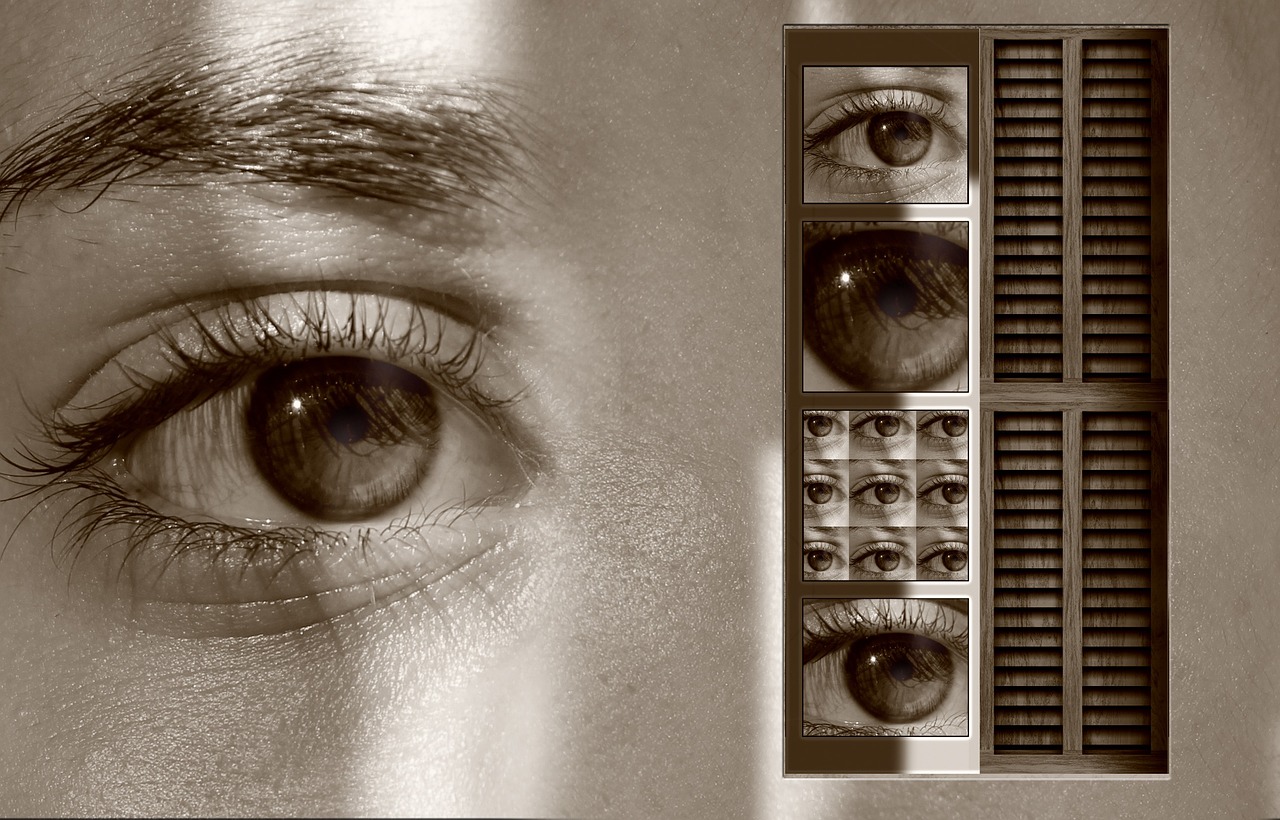
Id, Ego, and Superego Explained
This article explores the significant impact Sigmund Freud had on the field of psychology, examining his theories, concepts, and lasting influence on modern psychological practices.
Freud's groundbreaking idea of the unconscious mind reshaped our understanding of human behavior, emphasizing the role of repressed thoughts and feelings in influencing actions and emotions.
Freud proposed the tripartite model of the psyche: the id, ego, and superego, providing a framework for understanding internal conflicts and personality development throughout the lifespan.
Freud's model of the psyche is not just a theoretical construct; it serves as a roadmap for understanding the complexities of human behavior. At its core, the id, ego, and superego represent different aspects of our personality, each contributing to our thoughts and actions in unique ways. The id is the primal part of our personality, driven by basic instincts and desires. It operates on the pleasure principle, seeking immediate gratification without considering the consequences. Imagine a child throwing a tantrum because they want candy; that's the id in action—impulsive, demanding, and focused solely on pleasure.
On the other hand, the ego acts as the mediator between the unrealistic demands of the id and the moral constraints of the superego. It operates on the reality principle, which means it understands that not all desires can be fulfilled immediately. Think of the ego as the adult in a room full of children; it knows when to say "no" and when to negotiate. This balancing act is crucial for healthy functioning, as it helps us navigate the complexities of life while still considering our needs and desires.
Finally, the superego represents our internalized moral compass, shaped by societal norms and parental guidance. It develops as we grow and learn what is considered right and wrong. The superego can be quite harsh, often imposing guilt or shame when we stray from its ideals. It's like that nagging voice in your head reminding you to make the right choice, even when the id is screaming for instant gratification. Together, these three components create a dynamic interplay that influences our behavior and decision-making.
- Id: Represents primal instincts and operates on the pleasure principle.
- Ego: Balances the desires of the id with the realities of the world.
- Superego: Enforces moral standards and ideals, shaping our conscience.
Understanding this triadic structure is essential for grasping the complexities of human behavior. It reveals why we sometimes feel torn between our desires and our moral obligations. The id pushes us toward indulgence, the ego seeks balance, and the superego holds us accountable. This ongoing internal dialogue is what makes us human, allowing for growth, conflict, and ultimately, a deeper understanding of ourselves.
Freud's development of psychoanalysis introduced innovative therapeutic techniques, including free association and dream analysis, aimed at uncovering repressed thoughts and facilitating emotional healing.
This method encourages patients to verbalize their thoughts freely, allowing hidden emotions and memories to surface, providing insight into their psychological conflicts and facilitating resolution.
Freud believed dreams were a window into the unconscious, using symbolism to reveal hidden desires and fears, thus offering therapeutic insights into the patient's psyche.
Freud's contributions have profoundly influenced various psychological disciplines, including clinical psychology, psychotherapy, and even cultural studies, highlighting the relevance of his theories in contemporary contexts.
Freudian concepts continue to shape therapeutic practices, emphasizing the importance of understanding unconscious processes and the therapeutic relationship in facilitating personal growth and healing.
While Freud's theories have faced criticism and evolution, many of his ideas have been adapted and integrated into modern psychological frameworks, reaffirming his lasting legacy in the field.
- What is the id, ego, and superego?
The id is the primal part of our personality focused on immediate gratification. The ego mediates between the id and the real world, while the superego represents our moral standards. - How did Freud's theories influence modern psychology?
Freud's ideas laid the groundwork for various psychological practices, emphasizing the role of the unconscious mind and internal conflicts in shaping behavior. - Are Freud's theories still relevant today?
Yes, many of Freud's concepts have been adapted into contemporary psychology, influencing therapeutic techniques and our understanding of human behavior.
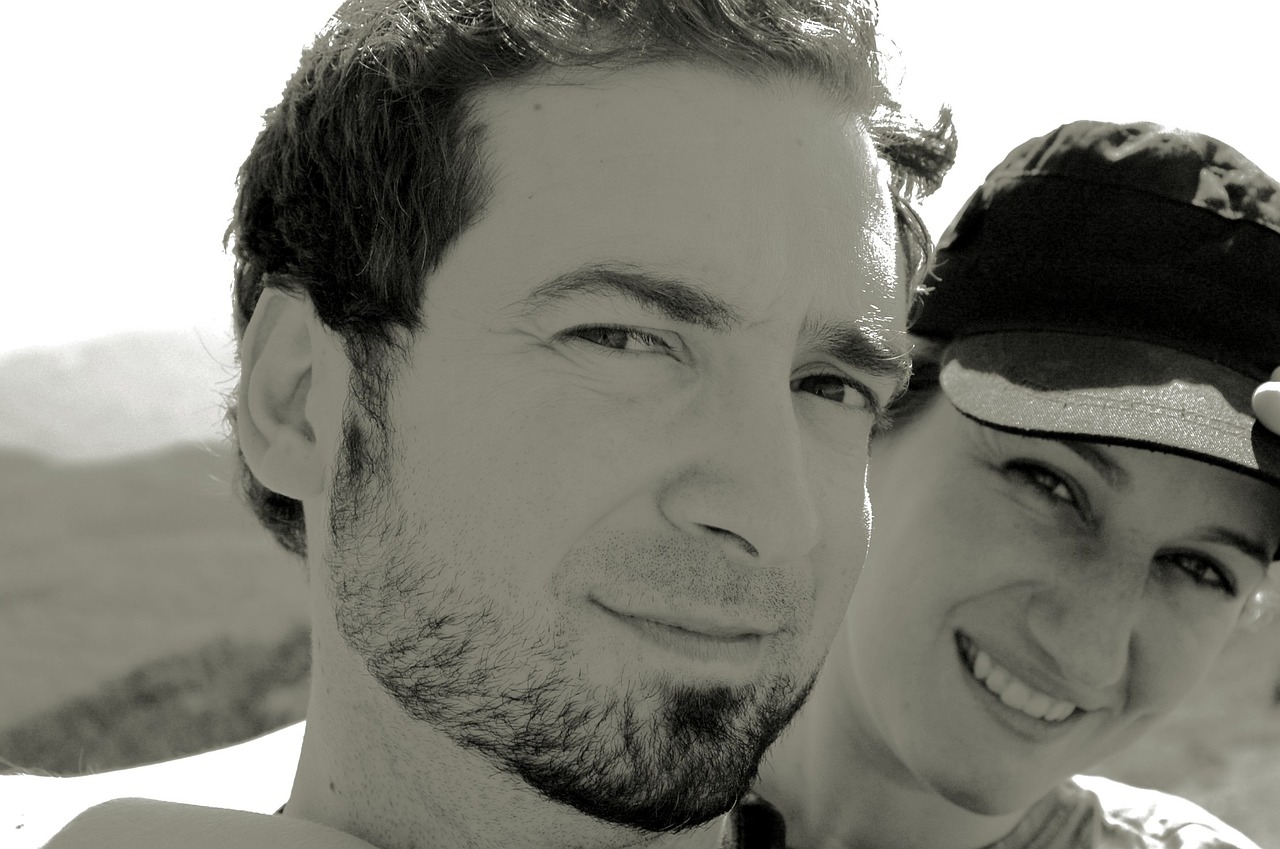
Functions of the Id
The id is the most primitive part of our psyche, operating entirely in the unconscious realm. It’s like a toddler throwing a tantrum, demanding instant satisfaction without any regard for reality or consequences. This component of our personality is driven by the pleasure principle, which means it seeks immediate gratification of basic needs and desires. Think of it as the wild child within us, always craving pleasure, whether it’s hunger, thirst, or even more complex emotional needs. The id doesn’t care about social norms or rules; it simply wants what it wants, and it wants it now!
To illustrate the functions of the id, let’s consider a few key aspects:
- Impulse Control: The id is notorious for its lack of impulse control. Imagine a child who sees a candy bar and immediately wants to grab it without thinking about whether they should ask for permission or consider the consequences. This is the essence of the id.
- Basic Instincts: The id is responsible for our basic survival instincts, such as the need for food, water, and shelter. It’s the driving force behind our most primal urges, pushing us to fulfill our needs as quickly as possible.
- Emotional Reactions: The id also plays a role in our emotional responses. When we feel angry or frustrated, it’s often the id that’s reacting, demanding immediate resolution to our discomfort.
However, while the id is crucial for our survival and well-being, it can lead to chaos if left unchecked. Without the moderating influence of the ego, which balances these primal desires with reality, individuals may find themselves acting impulsively and engaging in behaviors that are harmful to themselves or others. For example, consider someone who succumbs to the id’s demands by indulging in excessive drinking or reckless spending. These actions might provide temporary pleasure but can lead to long-term consequences such as health issues or financial instability.
In summary, the functions of the id are foundational to our understanding of human behavior. It embodies our most basic instincts and desires, driving us to seek pleasure and avoid pain. Yet, it is essential to recognize that while the id plays a significant role in our lives, it must be balanced by the ego and superego to ensure we navigate the complexities of life effectively. This delicate interplay between our primal urges and the reality of our circumstances is what makes us uniquely human.
- What is the id in Freud's theory? The id is the part of our psyche that contains our most basic instincts and desires, operating on the pleasure principle and seeking immediate gratification.
- How does the id affect behavior? The id drives impulsive behaviors and emotional reactions, pushing individuals to seek pleasure without considering the consequences.
- Why is the id important? The id is essential for survival as it motivates us to satisfy our basic needs and drives our instincts, but it must be balanced by the ego and superego for healthy functioning.

Role of the Superego
The superego is often regarded as the moral compass of our psyche, representing the internalization of societal norms and values. It develops as we grow, shaped by our interactions with parents, teachers, and the broader cultural environment. Think of it as the voice in your head that reminds you of what is right and wrong, guiding your behavior and decisions. It's like having a wise old mentor who constantly evaluates your actions against a backdrop of moral standards.
Essentially, the superego has two main functions: it acts as a conscience and a moral ideal. The conscience punishes us with feelings of guilt when we stray from our ethical beliefs, while the moral ideal encourages us to strive for perfection and uphold high standards. This duality can create an internal tug-of-war, where the desires of the id clash with the ethical constraints imposed by the superego. For instance, imagine you're at a party, and there's a tempting dessert that you know is unhealthy. The id urges you to indulge, while the superego reminds you of your health goals and the importance of moderation.
The influence of the superego can be seen in various aspects of our lives. Here are a few key roles it plays:
- Guiding Behavior: It helps us navigate social situations by providing guidelines on how to behave appropriately.
- Instilling Guilt: When we act against our moral beliefs, the superego generates feelings of guilt, prompting us to correct our behavior.
- Shaping Identity: Through the internalization of cultural and familial values, the superego contributes to our sense of self and identity.
However, it’s important to note that an overly dominant superego can lead to excessive guilt, anxiety, and even a rigid personality. This can stifle creativity and spontaneity, making individuals overly critical of themselves and others. Thus, achieving a balance between the id, ego, and superego is crucial for healthy psychological functioning. In essence, while the superego is vital for moral development, it should not overshadow the other aspects of our personality.
In conclusion, the superego is a fundamental component of Freud's model of the psyche, providing a framework for understanding how our moral beliefs influence our actions and decisions. Its role in shaping our conscience and ethical standards cannot be understated, as it plays a pivotal part in our interactions with the world around us.
- What is the superego? The superego is the part of our personality that internalizes societal norms and moral values, acting as our moral compass.
- How does the superego influence behavior? It guides our actions by instilling feelings of guilt when we violate ethical standards and encouraging us to strive for higher moral ideals.
- Can the superego be too strong? Yes, an overly dominant superego can lead to excessive guilt and rigid behavior, affecting overall mental health.

The Ego's Defense Mechanisms
Freud's exploration of the ego's defense mechanisms reveals a fascinating, intricate dance between our conscious thoughts and the hidden depths of our unconscious mind. The ego, acting as the rational part of our psyche, employs these mechanisms to shield us from anxiety and emotional distress. Imagine the ego as a skilled juggler, keeping various mental balls in the air—balancing reality, desires, and societal expectations. When faced with overwhelming emotions or uncomfortable truths, the ego instinctively resorts to these defense strategies, ensuring our mental stability.
Among the most notable defense mechanisms identified by Freud are repression, denial, projection, and rationalization. Each mechanism serves a unique purpose in helping individuals cope with internal conflicts. For instance, repression acts like a mental bouncer, pushing distressing thoughts out of our conscious awareness. This is akin to shoving a beach ball underwater; it takes effort to keep it submerged, and eventually, it may pop back up when least expected.
Denial, on the other hand, is like wearing blinders; it allows individuals to ignore reality, convincing themselves that a problem doesn’t exist. Think of a person who refuses to acknowledge their addiction, insisting they can quit anytime. This defense mechanism can provide temporary relief, but it often leads to more significant issues down the line.
Projection is another intriguing mechanism where individuals attribute their own unacceptable feelings or thoughts onto others. For example, if someone is feeling angry but finds it unacceptable, they may accuse others of being hostile. This not only distorts reality but can also damage relationships, as it creates a cycle of misunderstanding and conflict.
Lastly, rationalization provides a way to justify our actions or feelings, even when they might be irrational. It’s like putting a positive spin on a negative situation. For instance, someone who fails an exam might say, “I didn’t really want to go to that school anyway,” rather than confronting their lack of preparation. This defense mechanism can offer a momentary sense of relief, but it often prevents genuine self-reflection and growth.
Understanding these defense mechanisms is crucial for both personal insight and therapeutic practices. By recognizing when we or others are employing these strategies, we can begin to unravel the complex web of our emotions and behaviors. In therapy, for instance, unveiling these mechanisms can lead to profound breakthroughs, allowing individuals to confront their fears and work towards healthier coping strategies. In essence, while these defense mechanisms serve a protective purpose, they can also hinder personal development if left unchecked.
- What are defense mechanisms? Defense mechanisms are psychological strategies used by the ego to protect against anxiety and emotional distress.
- Can defense mechanisms be harmful? Yes, while they can provide temporary relief, over-reliance on them can lead to avoidance of real issues and hinder personal growth.
- How can I recognize my defense mechanisms? Self-reflection and therapy can help identify patterns in your thoughts and behaviors that indicate the use of defense mechanisms.
- Are defense mechanisms the same for everyone? While many defense mechanisms are universal, individuals may rely on different ones based on their unique experiences and personalities.
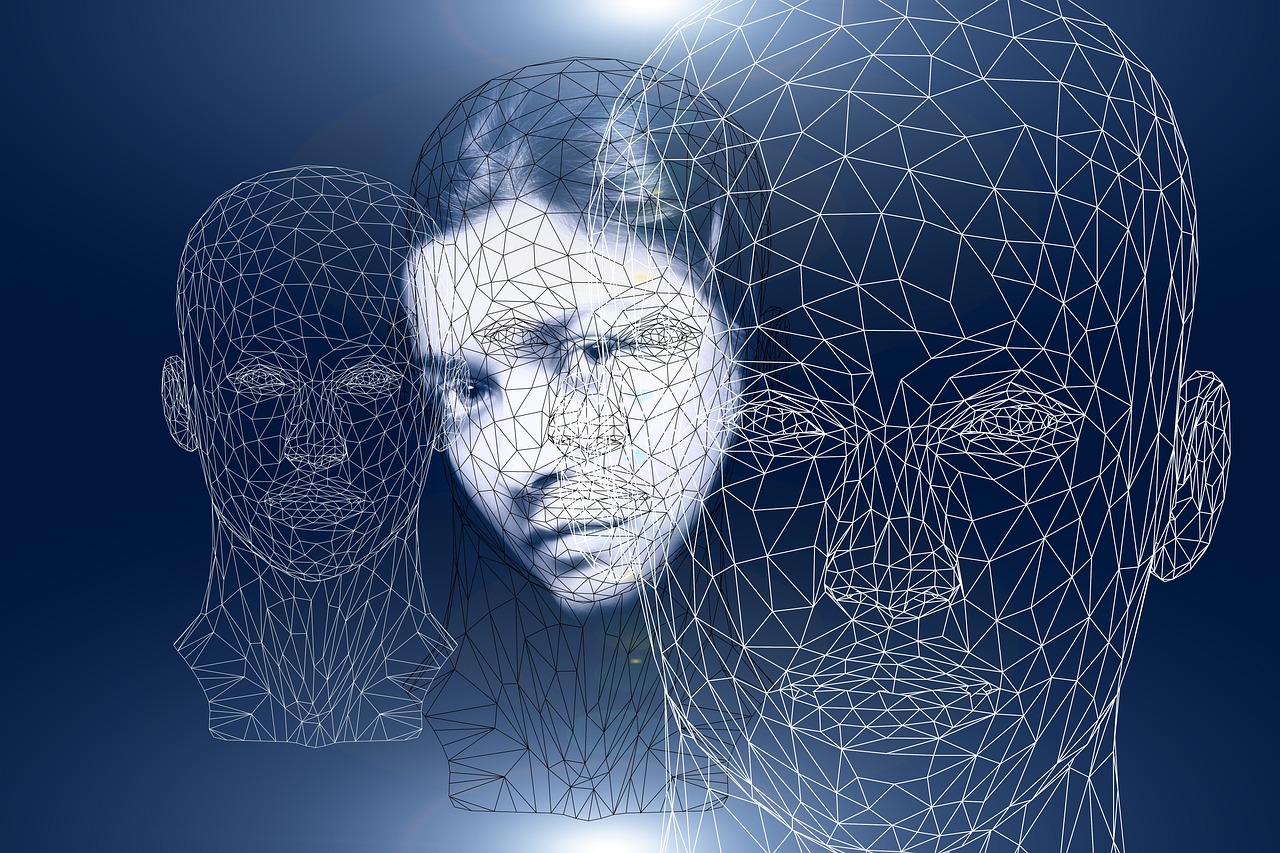
Psychoanalysis: A Therapeutic Approach
Psychoanalysis, developed by Sigmund Freud, revolutionized the way we understand and treat psychological issues. This innovative therapeutic approach delves deep into the unconscious mind, aiming to uncover repressed thoughts and emotions that often manifest as psychological distress. Imagine your mind as an iceberg: the visible part above water represents your conscious thoughts, while the vast underwater portion symbolizes the unconscious. Freud believed that by exploring this submerged part, individuals could gain insight into their behaviors and emotions, leading to profound healing.
At the core of psychoanalysis are several key techniques that facilitate this exploration. Two of the most notable methods are free association and dream analysis. Each of these techniques serves a unique purpose but ultimately aims to bring unconscious conflicts to the surface, allowing for resolution and understanding.
The free association technique invites patients to express their thoughts without censorship. This method encourages individuals to verbalize whatever comes to mind, no matter how trivial or unrelated it may seem. By doing so, patients may uncover hidden emotions and memories that have long been repressed. For instance, a seemingly random thought about a childhood toy might lead to deeper insights about feelings of loss or abandonment. This process not only helps in identifying the root causes of psychological distress but also fosters a safe space for individuals to explore their inner worlds.
Another fascinating aspect of psychoanalysis is dream interpretation. Freud famously referred to dreams as the "royal road to the unconscious." He believed that dreams are filled with symbols and hidden meanings that can reveal our deepest desires and fears. For example, dreaming about flying might symbolize a desire for freedom or escape from everyday pressures. By analyzing these dreams, therapists can help patients understand the underlying issues affecting their mental health. This exploration can lead to significant breakthroughs and emotional healing, as individuals begin to make sense of their internal struggles.
Moreover, psychoanalysis emphasizes the importance of the therapeutic relationship between the patient and therapist. This relationship is built on trust and empathy, allowing individuals to feel safe as they navigate their emotional landscapes. The therapist acts as a guide, helping patients to uncover and confront their unconscious conflicts, ultimately leading to personal growth and healing.
In summary, psychoanalysis is not just a method of therapy; it's a journey into the depths of the human psyche. By utilizing techniques like free association and dream interpretation, Freud's approach provides invaluable insights into our unconscious motivations, paving the way for profound emotional healing. As we continue to explore and adapt these concepts in modern therapy, Freud's legacy lives on, reminding us of the intricate connections between our thoughts, feelings, and behaviors.
- What is the main goal of psychoanalysis? The primary aim of psychoanalysis is to uncover repressed thoughts and emotions, helping individuals understand the underlying causes of their psychological distress.
- How long does psychoanalysis typically last? Psychoanalysis can vary in duration, often requiring several months to years, depending on the individual's needs and the complexity of their issues.
- Is psychoanalysis effective for everyone? While many people find psychoanalysis beneficial, its effectiveness can depend on the individual's willingness to engage in the process and explore their unconscious mind.

Free Association Technique
The is one of the cornerstones of Freud's psychoanalytic approach, serving as a powerful tool for unraveling the complexities of the human mind. Imagine sitting comfortably in a quiet room, a therapist gently encouraging you to speak freely about whatever comes to mind. This process is akin to opening a treasure chest of thoughts and feelings, where hidden gems of insight can be unearthed. The beauty of this technique lies in its simplicity; there are no right or wrong answers, just the flow of consciousness that can lead to profound revelations.
During a session, patients are invited to verbalize their thoughts without censorship or judgment. This often leads to unexpected connections, as seemingly unrelated ideas begin to intertwine. For instance, a patient might start by discussing their day at work, only to find themselves recalling a childhood memory that sheds light on their current anxieties. This stream of consciousness is not just random chatter; it is a pathway into the unconscious, where repressed emotions and unresolved conflicts reside.
Freud believed that by engaging in this technique, individuals could access their unconscious mind, bringing to the surface thoughts and feelings that may have been buried deep within. The therapist listens attentively, guiding the patient and occasionally interjecting with questions that encourage deeper exploration. This dynamic interaction fosters a safe environment, allowing patients to confront their inner struggles and gain insights into their behavior.
Here’s how the Free Association Technique typically unfolds:
- Initial Thoughts: The patient begins by sharing whatever comes to mind.
- Connection to Emotions: As thoughts flow, the therapist helps identify emotional responses tied to these thoughts.
- Exploration of Memories: The conversation may lead to the exploration of past experiences that illuminate current issues.
- Insight and Resolution: The process often culminates in insights that facilitate healing and personal growth.
While it may seem daunting at first, many patients find that this technique provides a liberating experience, allowing them to voice their innermost thoughts without fear of judgment. The Free Association Technique not only aids in uncovering the roots of psychological distress but also empowers individuals to take ownership of their narratives. In essence, it transforms the therapeutic process into a collaborative journey of self-discovery.
In conclusion, the Free Association Technique is more than just a method; it is a profound invitation to explore the depths of the human psyche. By embracing this technique, individuals can embark on a journey that not only reveals the hidden layers of their minds but also fosters a deeper understanding of themselves. It is a testament to Freud's enduring legacy, showcasing the power of words and thoughts in the quest for emotional healing.
Q: What is the purpose of the Free Association Technique?
A: The primary purpose is to uncover repressed thoughts and emotions, allowing individuals to gain insight into their psychological conflicts and facilitate emotional healing.
Q: How does the Free Association Technique work?
A: Patients are encouraged to speak freely about their thoughts, feelings, and memories, which helps reveal underlying issues that may be affecting their mental health.
Q: Is the Free Association Technique effective for everyone?
A: While many individuals benefit from this technique, its effectiveness can vary. It often depends on the individual's willingness to engage in the process and the therapeutic relationship established with the therapist.
Q: Can I practice Free Association on my own?
A: Yes, individuals can practice Free Association on their own by journaling or speaking aloud to themselves, although working with a trained therapist can provide additional insights and guidance.

Dream Interpretation
Freud believed that dreams serve as a gateway to the unconscious mind, offering a unique glimpse into our hidden desires, fears, and unresolved conflicts. He famously stated, “Dreams are the royal road to the unconscious,” highlighting their significance in understanding the complexities of human psychology. When we dream, our minds engage in a symbolic language, where everyday experiences and emotions transform into vivid imagery and narratives. This transformation can often leave us puzzled upon waking, but Freud’s approach to dream interpretation provides a framework to decode these enigmatic messages.
According to Freud, dreams can be divided into two primary components: the manifest content and the latent content. The manifest content refers to the actual storyline of the dream—the events and images we recall upon waking. In contrast, the latent content represents the hidden meanings and underlying motives that the dream conceals. Freud argued that the latent content often reveals our repressed thoughts and feelings, which are too distressing or socially unacceptable to confront directly in waking life.
To illustrate this concept, consider the following example: if someone dreams of climbing a mountain, the manifest content is the act of climbing itself. However, the latent content might symbolize the individual's aspirations, challenges, or even feelings of inadequacy in their personal or professional life. Freud's method of dream interpretation involves analyzing these symbols and connecting them to the dreamer's waking experiences, emotions, and relationships.
Freud employed various techniques for dream analysis, including:
- Free Association: This technique encourages individuals to express their thoughts and feelings about dream elements without censorship, allowing deeper insights to emerge.
- Symbolism: Many dreams contain symbols that require interpretation; for instance, flying might represent freedom or escape, while being chased could indicate anxiety or avoidance.
- Contextual Analysis: Understanding the dreamer's life circumstances and emotional state is crucial for accurate interpretation, as dreams often reflect personal experiences and unresolved issues.
Through this intricate process, Freud believed that dream interpretation could lead to significant therapeutic breakthroughs. It allows individuals to confront their inner conflicts, facilitating a path toward emotional healing and self-discovery. By understanding the hidden meanings behind their dreams, individuals can gain clarity about their feelings and motivations, ultimately leading to personal growth.
In summary, Freud's approach to dream interpretation not only revolutionized our understanding of dreams but also provided a powerful tool for psychological exploration. It underscores the importance of the unconscious mind in shaping our thoughts, behaviors, and emotional well-being. As we continue to navigate the complexities of our inner worlds, the insights gleaned from our dreams can serve as invaluable guides on our journey toward self-awareness and healing.
- What is the significance of dreams according to Freud?
Freud believed that dreams are essential for understanding the unconscious mind, revealing hidden desires and unresolved conflicts. - What are the two main components of a dream?
The two components are manifest content (the storyline) and latent content (the hidden meanings). - How can dream interpretation be beneficial?
Dream interpretation can help individuals confront inner conflicts, leading to emotional healing and personal growth.
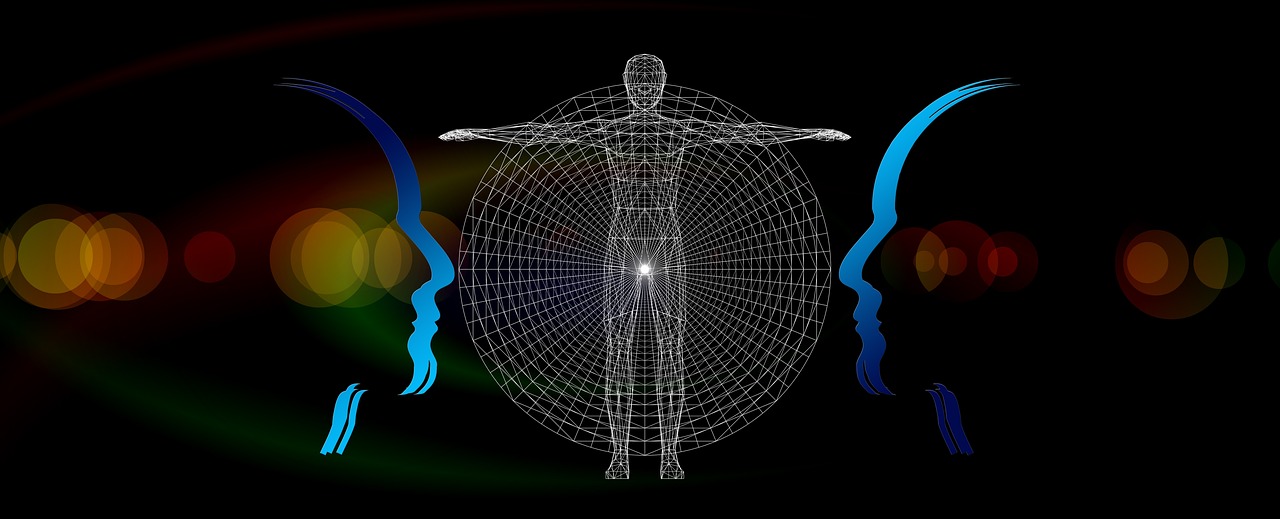
Impact on Modern Psychology
Sigmund Freud's contributions to psychology are not merely historical footnotes; they are the very bedrock upon which many modern psychological practices stand. His theories have woven themselves into the fabric of various psychological disciplines, influencing how we understand the human mind and behavior today. Freud's ideas have sparked a plethora of discussions, adaptations, and critiques, making them relevant even in contemporary contexts.
One of the most significant impacts Freud had on modern psychology is the recognition of the unconscious mind. Before Freud, the idea that there could be hidden layers of thought and emotion was largely unconsidered. Now, it’s a fundamental concept in psychology that informs everything from therapy to cognitive behavioral approaches. The understanding that our unconscious can influence our actions has led to more comprehensive therapeutic methods that address not just the symptoms but the root causes of psychological distress.
Freud’s emphasis on the therapeutic relationship has also been transformative. The dynamic between therapist and patient is now seen as crucial for effective therapy. Therapists are trained to create a safe environment where patients can explore their thoughts and feelings without judgment, echoing Freud's belief in the importance of a trusting therapeutic alliance. This has paved the way for numerous therapeutic modalities that prioritize the client’s emotional experience.
Moreover, Freud's work has permeated various fields beyond psychology, including literature, art, and cultural studies. His ideas about the unconscious and the symbolic meanings of dreams have inspired countless artists and writers to delve deeper into the human psyche. For example, the exploration of themes such as desire, repression, and conflict in literature can often be traced back to Freudian concepts. This cross-disciplinary influence highlights the profound nature of Freud's theories and their ability to resonate across different domains of human experience.
Despite facing criticism, Freud's theories have adapted over the years. Many contemporary psychologists have integrated his ideas into modern frameworks, recognizing their value while also addressing their limitations. For instance, while Freud's psychosexual stages of development have been challenged, the notion that early experiences shape our personality remains a cornerstone of developmental psychology. This kind of evolution in thought demonstrates that while some of Freud's specific ideas may be outdated, the essence of his contributions continues to inspire and inform current psychological practice.
In summary, Freud's legacy in modern psychology is undeniable. His pioneering work has not only shaped the field but has also opened doors to new ways of thinking about the mind and behavior. As we continue to explore the complexities of human psychology, Freud's influence will undoubtedly remain a guiding light, reminding us of the intricacies of our inner worlds.
- What is Freud's most significant contribution to psychology? Freud's most significant contribution is arguably the concept of the unconscious mind, which reshaped our understanding of human behavior and motivation.
- How has Freud influenced modern therapy? Freud's emphasis on the therapeutic relationship and techniques like free association and dream interpretation laid the groundwork for many modern therapeutic practices.
- Are Freud's theories still relevant today? Yes, while some of Freud's specific theories have been critiqued, many of his core ideas about the unconscious and early development continue to influence contemporary psychology.

Legacy in Psychotherapy
Sigmund Freud's influence on psychotherapy is akin to the roots of a mighty oak tree, deeply embedded and expansive, providing shade and support to countless branches of modern therapeutic practices. His pioneering concepts have not only shaped the foundational theories of psychotherapy but have also paved the way for new approaches that prioritize the understanding of the unconscious mind. Freud's emphasis on exploring the intricacies of human behavior through a therapeutic lens has transformed how we view mental health and emotional well-being.
One of the most significant aspects of Freud's legacy is the establishment of a therapeutic relationship characterized by empathy, confidentiality, and trust. This relationship is crucial for facilitating personal growth and healing, making the client feel safe enough to explore their innermost thoughts and feelings. In therapy today, this compassionate connection remains a cornerstone, allowing individuals to delve into their psyches without fear of judgment.
Moreover, Freud's methods, such as free association and dream analysis, continue to be utilized in modern psychotherapy. These techniques encourage clients to express their thoughts and feelings openly, helping to unearth repressed emotions and unresolved conflicts. The idea that dreams can serve as a gateway to understanding one’s unconscious desires and fears has been adapted into various contemporary therapeutic practices. For instance, many therapists now incorporate narrative therapy, which echoes Freud's dream interpretation by allowing clients to tell their stories and reframe their experiences.
Freud's legacy also extends to the recognition of the importance of childhood experiences in shaping adult behavior. His assertion that early relationships and formative experiences significantly influence personality development remains a crucial consideration in therapeutic settings. Today, therapists often explore clients’ pasts to uncover patterns that may be affecting their present lives, mirroring Freud's original insights.
However, it is essential to acknowledge that Freud's theories have undergone significant scrutiny and adaptation over the years. Critics have pointed out limitations in his methods and conclusions, particularly regarding the scientific validity of his ideas. Yet, rather than diminishing his impact, these critiques have spurred the evolution of psychological practices. Many modern therapists integrate Freudian concepts with other psychological frameworks, creating a more comprehensive approach to mental health.
In summary, Freud's contributions to psychotherapy are monumental, laying the groundwork for a discipline that seeks to understand the complexities of the human mind. His ideas about the unconscious, the therapeutic relationship, and the significance of early experiences continue to resonate within the field, ensuring that his legacy endures. As we navigate the ever-evolving landscape of psychology, Freud's insights remind us of the profound depths of the human psyche and the importance of exploring them in our quest for healing and understanding.
- What is the main contribution of Freud to psychology?
Freud's main contribution is the development of the theory of the unconscious mind, which emphasizes that repressed thoughts and feelings significantly influence behavior and emotions. - How did Freud's theories influence modern psychotherapy?
Freud's theories laid the groundwork for understanding the therapeutic relationship, and his techniques like free association and dream analysis remain integral to many contemporary therapeutic practices. - Are Freud's theories still relevant today?
Yes, while some of Freud's ideas have faced criticism, many have been adapted and integrated into modern psychological frameworks, maintaining their relevance in understanding human behavior.

Critiques and Adaptations
Sigmund Freud's theories have sparked a whirlwind of discussions, debates, and critiques over the decades. While his ideas laid the groundwork for modern psychology, they haven't been without their fair share of skepticism. Many critics argue that Freud's theories are overly focused on sexuality and unconscious motivations, suggesting that they lack empirical support. For instance, his emphasis on the Oedipus complex and the role of repressed sexual feelings has been deemed too narrow and not universally applicable to all individuals. Critics also point out that Freud's methods, such as dream interpretation and free association, can be seen as subjective, leading to interpretations that may vary widely from one therapist to another.
Despite these critiques, Freud's work has not only survived but thrived through adaptations and reinterpretations. In contemporary psychology, many of Freud's concepts have been reworked to align with modern scientific standards. For example, the idea of the unconscious has been embraced but expanded beyond Freud's original framework. Today, psychologists recognize that the unconscious mind involves a complex interplay of cognitive processes, emotional experiences, and learned behaviors. This evolution illustrates how Freud's foundational ideas can be integrated into current psychological theories.
Moreover, Freud's influence extends into various fields beyond psychology, such as literature, art, and cultural studies. His exploration of the human psyche has inspired countless artists and writers to delve into themes of identity, desire, and conflict. This cross-disciplinary impact underscores the relevance of his theories, even in a world that often critiques them. In essence, Freud's work serves as a springboard for exploration, inviting both admiration and scrutiny.
To encapsulate the critiques and adaptations surrounding Freud's theories, we can look at a table that summarizes key points:
| Aspect | Critiques | Adaptations |
|---|---|---|
| Focus | Overemphasis on sexuality and unconscious motivations | Expanded understanding of the unconscious, integrating cognitive processes |
| Methods | Lack of empirical support for therapeutic techniques | Development of evidence-based practices in therapy |
| Influence | Subjectivity in interpretation of dreams and free association | Inspiration for various fields such as literature and art |
In conclusion, while Freud's theories may face criticism, their adaptability and influence across various domains highlight his enduring legacy. The dialogue surrounding his work continues to evolve, prompting new generations of psychologists to explore the depths of the human mind.
- What are the main critiques of Freud's theories? Many critics argue that Freud's focus on sexuality and the unconscious is too narrow and lacks empirical validation.
- How have Freud's ideas been adapted in modern psychology? Freud's concepts have been expanded to include a broader understanding of cognitive processes and emotional experiences.
- What impact did Freud have on fields outside of psychology? Freud's exploration of the psyche has influenced literature, art, and cultural studies, inspiring creative expressions of human experience.
Frequently Asked Questions
- What is Freud's theory of the unconscious mind?
Freud's theory of the unconscious mind suggests that a significant portion of our thoughts, feelings, and memories are not accessible to our conscious awareness. This hidden layer influences our behavior and emotions, often without us realizing it. By exploring these repressed thoughts, Freud believed individuals could gain insight into their actions and emotional struggles.
- Can you explain the structure of personality according to Freud?
Freud proposed a tripartite model of personality consisting of the id, ego, and superego. The id is the primal part that seeks immediate pleasure, the ego balances the demands of reality, and the superego represents our moral conscience. This framework helps us understand the internal conflicts that shape our personalities and behaviors throughout our lives.
- What are defense mechanisms in Freud's theory?
Defense mechanisms are psychological strategies used by the ego to protect individuals from anxiety and emotional distress. They help manage internal conflicts between the id and superego. Common defense mechanisms include repression, denial, and projection, allowing people to cope with uncomfortable feelings and thoughts.
- How does psychoanalysis work as a therapeutic approach?
Psychoanalysis is a therapeutic method developed by Freud that aims to uncover repressed thoughts and emotions. Techniques like free association encourage patients to express their thoughts without censorship, while dream analysis reveals hidden desires and fears. This process helps individuals gain insight into their psychological conflicts, facilitating healing and personal growth.
- What impact has Freud had on modern psychology?
Freud's contributions have left a lasting mark on various fields within psychology, including clinical psychology and psychotherapy. His emphasis on the unconscious mind and the therapeutic relationship continues to influence contemporary practices, highlighting the importance of understanding deeper psychological processes in achieving healing and personal development.
- Are Freud's theories still relevant today?
While some of Freud's theories have faced criticism and undergone adaptations, many of his concepts remain relevant in modern psychology. His ideas about the unconscious mind, defense mechanisms, and the significance of early experiences continue to inform therapeutic practices and psychological research.





